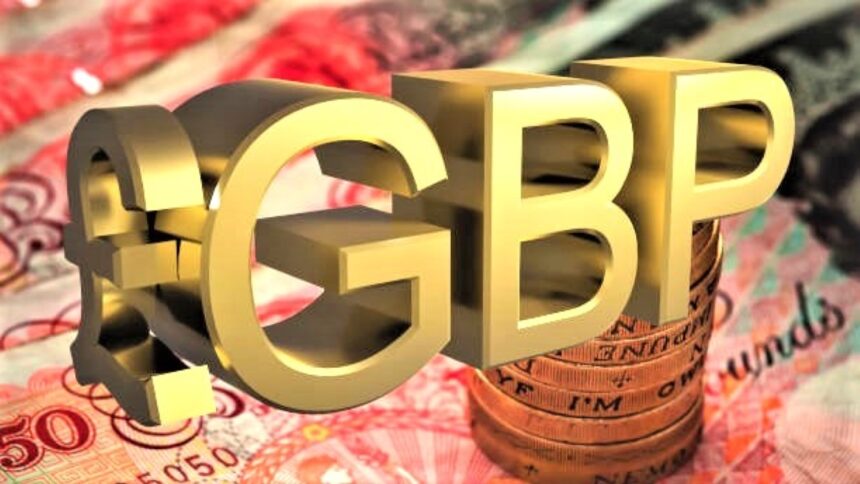Pound Eyes Fourth Straight Monthly Gain Amid Trade and Rate Policy Dynamics.
The Pound Sterling (GBP) dipped slightly against the US Dollar (USD) on Friday, with GBPUSD retreating to around 1.3475 as the Greenback attempted a modest rebound. Despite the day’s soft tone, the British currency set to register its fourth consecutive monthly gain against the US Dollar, underscoring improving sentiment around the UK economy and growing skepticism over US trade and fiscal stability.
While temporary weakness in GBPUSD is evident, the broader narrative remains supportive of the Pound, driven by resilient economic growth, cautious optimism from the Bank of England (BoE), and the conclusion of key trade negotiations. In contrast, the Greenback’s path remains clouded by legal drama surrounding former President Donald Trump’s tariff policies, and Federal Reserve caution ahead of April’s PCE inflation report.
BoE Cautious Tone Boosts Confidence in UK Outlook
At the heart of Sterling’s recent rally lies a shift in expectations for UK monetary policy. While markets initially priced in aggressive interest rate cuts by the Bank of England, recent economic data and central bank commentary have led traders to temper their dovish bets.
BoE Governor Andrew Bailey struck a deliberately cautious tone this week, stating that any rate cuts will be implemented in a “gradual and careful” manner. He acknowledged that the economy remains “hard to read” due to conflicting signals across sectors. Notably, Bailey flagged concerns about persistent inflation in food and other non-energy categories, even as wage pressures appear to be cooling.
Investors took this as a sign that the BoE is not in a rush to cut interest rates despite earlier assumptions. This perception has helped keep the Pound underpinned, particularly as other major central banks such as the European Central Bank (ECB) and the Federal Reserve remain non-committal about policy easing.
Economic Data Supports a Less Dovish BoE
Robust economic performance in the first quarter of 2025 has added to the case for policy restraint. The UK economy grew by 0.7% in Q1, far exceeding the 0.1% expansion seen in the final quarter of 2024. The stronger growth prompted the International Monetary Fund (IMF) to upgrade its full-year GDP forecast for the UK from 1.1% to 1.2%.
Additionally, inflation has remained more stubborn than anticipated. Core price growth continues to exceed the BoE’s 2% target, even as headline figures edge lower. Traders in the futures market now expect a total of only 38 basis points of rate cuts by year-end, implying a single 25 bps cut with a 50% probability of another.
This pullback in dovish expectations has contributed significantly to the Pound’s four-month uptrend, particularly in contrast to the US, where policy and politics remain deeply entangled.
Trade Deals Offer Further Support to the Pound
The Pound has also benefitted from progress on the trade front. The UK government recently finalized or advanced trade negotiations with key partners including the United States, India, and the European Union. These deals are expected to lower trade friction, enhance investment opportunities, and reduce currency uncertainty.
Notably, the conclusion of bilateral understandings with Washington on technology cooperation and tariff coordination has bolstered sentiment around the UK’s long-term trade outlook. These agreements are particularly significant given the heightened trade tensions in the United States stemming from renewed tariff actions under President Trump.
US Dollar Recovers Slightly on Trade Appeal News
While the Pound has been rallying, Friday saw a modest recovery in the US Dollar after a federal appeals court temporarily paused a lower court’s ruling that sought to strike down most of former President Trump’s tariffs. The decision injected renewed trade-related anxiety into the markets, which prompted a cautious bid for the Greenback as a defensive hedge.
Earlier in the week, a US trade court ruled that Trump’s invocation of the 1977 International Emergency Economic Powers Act (IEEPA) to impose certain tariffs was unconstitutional without congressional approval. However, the appeals court’s decision to stay that ruling pending further arguments gave temporary support to the Dollar.
Still, the broader implications of renewed tariff use are seen as negative for the US economy, particularly if major trading partners retaliate. Market concerns about the possibility of a prolonged trade conflict are keeping investors wary of the long-term implications for growth and inflation.
Fed Remains Focused on Data Amid Political Pressure
Meanwhile, Federal Reserve Chair Jerome Powell emphasized this week that the US central bank will remain focused on its dual mandate of price stability and maximum employment. In his first in-person meeting with President Trump since his return to the White House, Powell reportedly made no commitments on policy direction and reiterated that decisions will depend on incoming economic data.
Trump has continued to pressure the Fed to cut interest rates, arguing that current levels are unnecessarily restrictive. However, Fed officials, including Powell, have resisted this political influence and remain cautious about lowering rates too soon in the face of persistent inflation risks.
Investors are now turning their attention to the April release of the Personal Consumption Expenditure (PCE) Price Index, the Fed’s preferred measure of inflation. The data, scheduled for release at 12:30 GMT, will offer fresh clues about whether price pressures are abating quickly enough to justify rate cuts in the coming months.
Market Expectations Tilt Toward September Fed Rate Cut
As of now, traders are assigning a high probability that the Fed will leave interest rates unchanged in its June and July meetings. According to the CME FedWatch Tool, the first rate cut is most likely to occur in September, barring a major downside surprise in inflation or employment data.
The divergence between Fed policy caution and the BoE’s data-driven flexibility has contributed to the Pound’s sustained strength against the US Dollar. Unless US inflation cools more rapidly than expected or the Fed shifts its stance more aggressively, the Dollar may continue to underperform against high-beta currencies like the Pound.
Summary Outlook for Pound
The Pound appears poised to close May with gains against the Dollar for the fourth straight month. While short-term pullbacks like Friday’s move to 1.3475 are likely due to positioning or temporary Greenback strength, the underlying momentum for Sterling remains firm.
Supportive macroeconomic data, delayed BoE easing, and diplomatic progress on trade all provide tailwinds for GBP. On the other hand, the US Dollar continues to grapple with trade policy uncertainty, inflation volatility, and political interference in monetary policy.
If upcoming PCE data shows moderating inflation, Fed rate cut expectations may firm up, pressuring the Dollar again. Conversely, if price growth remains sticky, GBPUSD could enter a period of consolidation or mild retracement. Still, the Pound’s structural tailwinds suggest any downside will likely be limited in the medium term.
[faq-schema id=”39721″]









